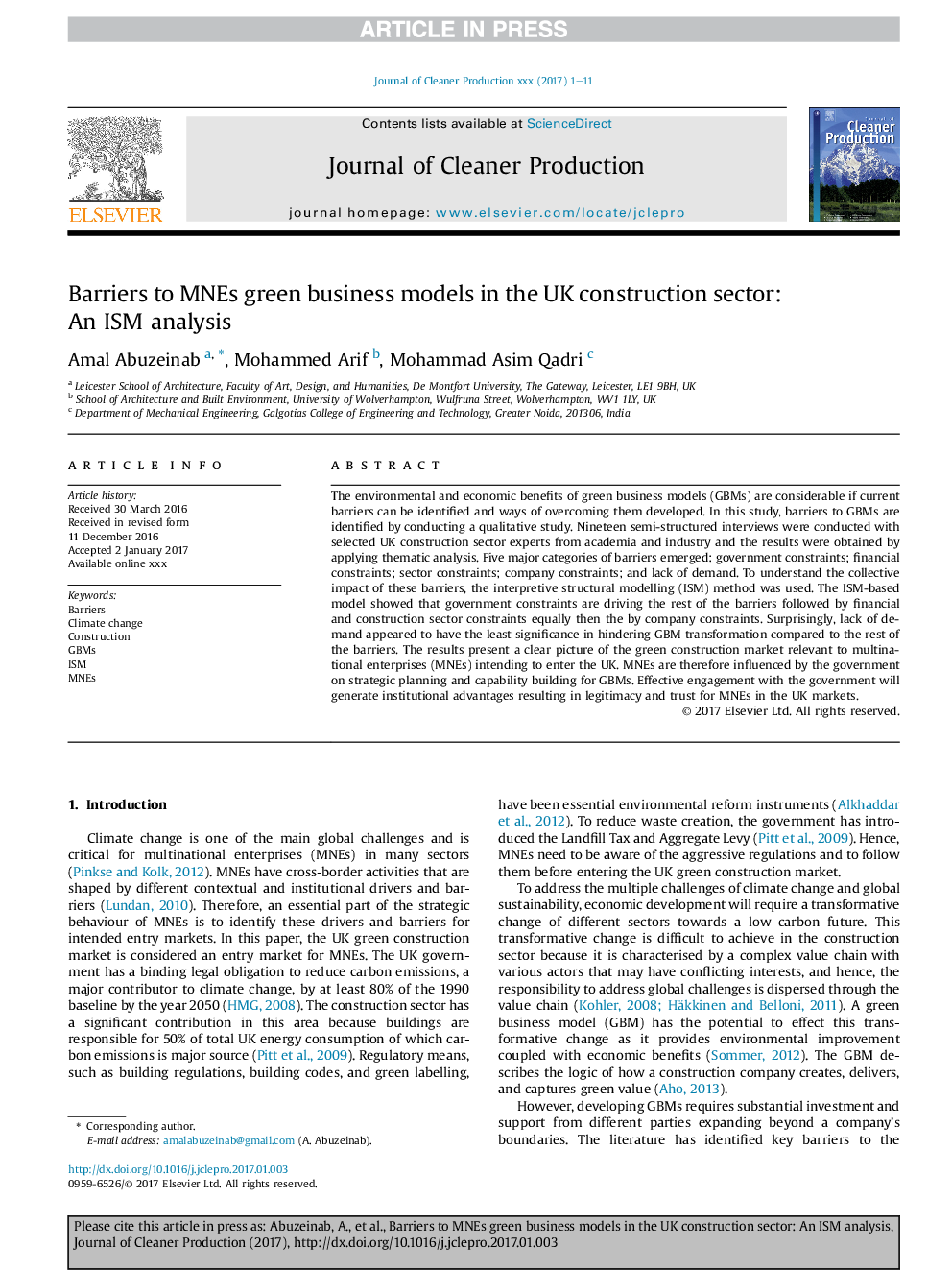| Article ID | Journal | Published Year | Pages | File Type |
|---|---|---|---|---|
| 5479529 | Journal of Cleaner Production | 2017 | 11 Pages |
Abstract
The environmental and economic benefits of green business models (GBMs) are considerable if current barriers can be identified and ways of overcoming them developed. In this study, barriers to GBMs are identified by conducting a qualitative study. Nineteen semi-structured interviews were conducted with selected UK construction sector experts from academia and industry and the results were obtained by applying thematic analysis. Five major categories of barriers emerged: government constraints; financial constraints; sector constraints; company constraints; and lack of demand. To understand the collective impact of these barriers, the interpretive structural modelling (ISM) method was used. The ISM-based model showed that government constraints are driving the rest of the barriers followed by financial and construction sector constraints equally then the by company constraints. Surprisingly, lack of demand appeared to have the least significance in hindering GBM transformation compared to the rest of the barriers. The results present a clear picture of the green construction market relevant to multinational enterprises (MNEs) intending to enter the UK. MNEs are therefore influenced by the government on strategic planning and capability building for GBMs. Effective engagement with the government will generate institutional advantages resulting in legitimacy and trust for MNEs in the UK markets.
Related Topics
Physical Sciences and Engineering
Energy
Renewable Energy, Sustainability and the Environment
Authors
Amal Abuzeinab, Mohammed Arif, Mohammad Asim Qadri,
